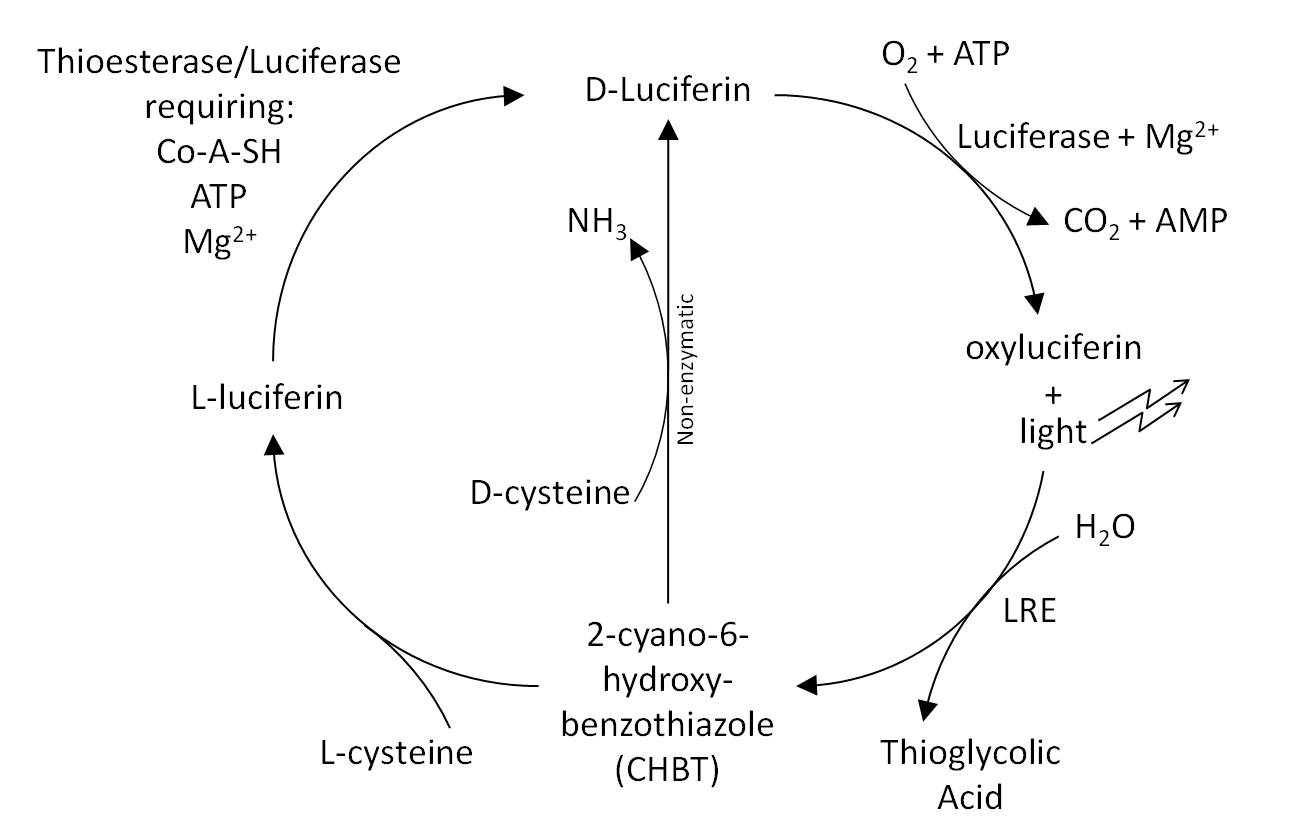Team:Cambridge/ProjectBioluminescenceNew/Recovery
From 2010.igem.org

Luciferin Recovery
To make the bioluminescence an improvement on current lab bioluminescence, we need to recover the luciferin as it is used. The diagram below outlines how this is done in nature.
Luciferin Recovery Enzyme
Little is known of this enzyme, which converts the used oxyluciferin into CHBT
CHBT
This molecule is comprised of just a few amino acids; however, the pathway to this is not characterised. It does provide a useful entry point into the luciferin cycle, being significantly cheaper than luciferin.
Conversion with D-cysteine
CHBT and D-cysteine can react to form D-luciferin, the useful steroisomer of luciferin. However, D-cysteine is not very abundant in cells and can inhibit cell activity.
Conversion with L-cysteine
CHBT and L-cysteine can react to form L-luciferin, which then gets transformed into D-luciferin. The exact mechanism behind this is unknown - all that is observed is that if you add L-luciferin to a cell, it becomes D-luciferin.
 "
"
